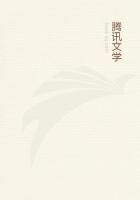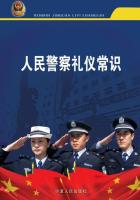[134]--I.E.about seven miles.It is actually about eight miles if measured from the extreme south point of the first line of defence northwards to the river.Razzak evidently did not include the walls of Anegundi,the northern lines of which lie two miles farther still to the north.
[135]--The descriptions are rather vague,but,if I am right in supposing that there was a long bazaar called the Pansupari bazaar,along the road leading from the palace gate to the Anegundi gate on the river,it must certainly have been crossed by another road,and probably therefore a road lined with shops,leading from the Kamalapura gate of the inner enclosure northwards to the great Hampi temple.Close to the gate of the palace proper these roads would intersect at right angles,and would form four separate bazaars or streets.The galleries and porticoes are now not in existence,but the remains in the street running east from the Hampi temple will show what the galleries were like in those days.This last street alone is half a mile long.
[136]--Remains of these are still to be seen not far from the "Ladies'Bath."There was a long trough that conveyed the water,and on each side were depressions which may have been hollowed for the reception of round vessels of different sizes,intended to hold water for household use.
[137]--"The DEWAN KHANAH resembles a forty-pillared hall"(Sir H.Elliot's translation,"History,"iv.108).I am doubtful as to what building is referred to.The Hakluyt translator's rendering seems to point to the great enclosure west of the elephant stables,which has been called the "Zenana."I know of no hall exactly answering to Sir Henry Elliot's description.The lofty walls with watch-towers at the angles WHICH surround the enclosure referred to would be just such as might be supposed to have been erected for the protection of the royal archives and offices of the kingdom --the "Dewan Khana."If so,the "hall"in front would be the structure to which has been fancifully given the name of "the concert-hall."This hall,or DAFTAR-KHANA,would be the usual working office of the Minister and his colleagues --the office of daily work or courthouse,the necessary documents and records being brought to and from the central offices in the enclosure.
[138]--Roughly,twenty yards by seven.It is difficult to understand the height mentioned.
[139]--I give this word as in the India Office copy.The Hakluyt edition has DAIANG,which seems incorrect.
[140]--Officers with staves,generally covered with silver.
[141]--Abdur Razzak writes as if he was standing at the gate of the palace looking eastwards.Taken so,his description seems exact.Mr.A.Rea takes this view generally in a paper published in the MADRAS CHRISTIAN COLLEGE MAGAZINE (December 1886).
[142]--About two hundred yards by fifteen.
[143]--All this seems to have disappeared,but the buildings may have stood on each side of what is now the main road from Kamalapura to Hampi --"behind the Mint,"as the author stood.
[144]--The India Office copy adds here:"He was exceedingly young."If so,the personage whom the ambassador interviewed could hardly have been Deva Raya II.,who at this period (1443)had been on the throne for twenty-four years.
[145]--MAHANADI (Hakluyt),MAHANAWI (Elliot).There can be little doubt as to the meaning.
[146]--The actual moment of the new moon corresponding to the beginning of the month of Karttika in Hindu reckoning was 7.40A.M.on the morning of October 23,and the first Hindu day (TITHI)of Karttika began at 5A.M.on October 24.The Muhammadan month begins with the heliacal rising of the moon,and this may have taken place on the 24th or 25th evening.At any rate,Razzak could hardly have called a festival that took place a whole month earlier a festival which took place "during three days in the month Rajab."Hence I think that he must have been present at the New Year festivities in Karttika,not at the Mahanavami in Asvina,a month previous.Note Paes'description of the festivals at which he was present.He states that the nine days'
MAHANAVAMI took place on September 12,when he was at Vijayanagar,and the details correspond to the year A.D.1520.September 12,1520,was the first day of the month Asvina.The New Year's festival that year took place on October 12,which corresponded to the first day of Karttika,each of these being the day following the NEW moon,not the full moon.
[147]--About seven yards or twenty-one feet.
[148]--Genealogical table in EPIGRAPHIA INDICA,iii.36.
[149]--Dr.Hultzsch (EPIG.IND.,iii.36,and note;IND.ANT.,xxi.321).The last is on a temple at Little Conjeeveram and is dated in Saka 1387expired,year Parthiva.
[150]--Saka 1392expired,year Vikriti,on the same temple (IND.ANT.,xxi.321--322).
[151]--Firishtah says that he reigned twenty-three years nine months and twenty days,which gives this date.The BURHAN-I MAASIR fixes his decease at the end of Junmada'l Awwal A.H.862,which answers to April A.D.1458.Major King states that another authority gives the date as four years later (IND.ANT.,Sept.1899,p.242,note).
[152]--28th Zil-kada A.H.865.
[153]--13th Zil-kada A.H.867.
[154]--Dec.I.viii.c.10.
[155]--Below,p.305.
[156]--IND.ANT.,November 1899,p.286,note.
[157]--Vijayanagar.
[158]--Masulipatam.
[159]--Scott's translation has "Ghondpore"(i.166);Briggs (ii.500)says "Condapilly."
[160]--This evidently means Kanchi or Conjeeveram;but the story is exceedingly improbable.The distance was 250miles,and the way lay through the heart of a hostile country.
[161]--Ramazan A.H.885.
[162]--11th Muharram,A.H.886.
[163]--Scott's translation,i.167.
[164]--It is possible that one of these towns was Goa,which was taken in 1469.
[165]--Meaning evidently palanquins.
[166]--"Chenudar"and "Binedar"appear to be variations of the name Vijayanagar,called "Bichenegher"farther on.















